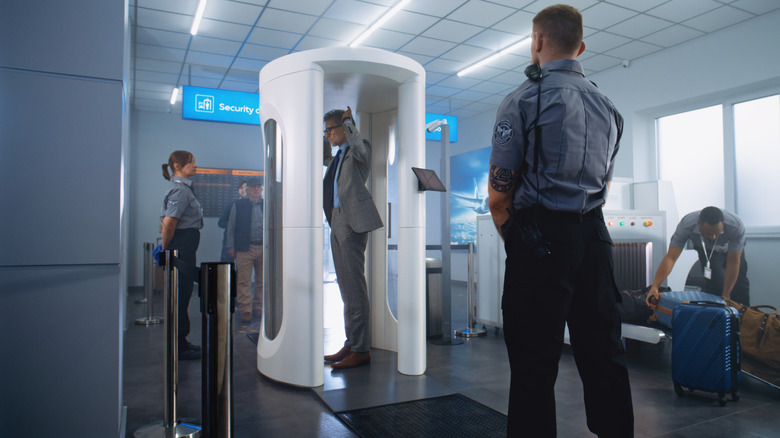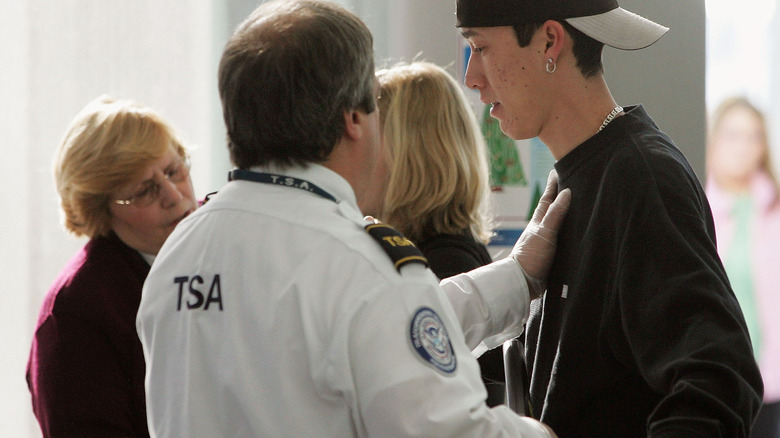What EPA Says About Radiation And Airport Security Scanners
If you've flown recently or have a trip planned, you're likely going to go through a full-body scanner at the airport. As your carry-on bags travel down the conveyor belt to be checked for dangerous and banned items, you walk into an open cabinet, raise your arms over your head, and get scanned to make sure you don't have anything you're not allowed to fly with, like weapons or hazardous materials.
While being scanned is a daily occurrence for millions of travelers, many people harbor concerns about radiation and airport security scanners. In fact, you may be wondering what the Environmental Protection Agency (EPA) has to say about whether or not they're dangerous to us, particularly if you're someone who flies often or does so with children.
The machines that are currently used in United States airports utilize something called millimeter waves, non-ionizing radio frequency waves that bounce off your body and back to the scanner. After it scans you, you're either cleared to move on, or you may get a pat-down if something is detected. On the EPA's website, they tell us, "Millimeter wave scanners emit far less energy than a cell phone." The Centers for Disease Control (CDC) concurs, sharing similar information on its website, saying, "The United States uses millimeter-wave technology in airport security scans. This form of technology uses low-energy non-ionizing radiation that releases thousands of times less energy than a cell phone."
What airport full body scanners show and what to do if you don't want to walk through one
Airports used to use another type of scanner, a backscatter scanner, that used low-energy x-rays to detect threats on a person. However, these machines haven't been used in the United States since 2013, despite the fact that they're still listed on the EPA webpage. (They may still be used in other parts of the world.) These were removed in the U.S. due to health and even privacy concerns, as they showed a more realistic outline of a body.
Regarding potential health concerns, the EPA says, "Generally, the amount of radiation received from a backscatter machine equals the amount of cosmic radiation received during two minutes of flight and the risk of health effects is very, very low." On the privacy side, millimeter wave machine full-body scanners at security show a visual that is more of a generic outline. Despite this, you should note that a specific bodily function may still get you flagged for a pat-down.
If you don't feel comfortable going through a millimeter wave machine, you can ask to get a pat-down instead. If you take this option, you may want to give yourself a bit more time to get through security, and pat-downs may be an issue for transgender passengers. Before you fly, you should know what is allowed if you feel uncomfortable with security screenings. The TSA says that you can request a private screening with a witness of your choice at any time during the process. It will be done by a TSA officer of the same sex, and the steps of the pat-down will be explained to you both before you get it and once it's done.

